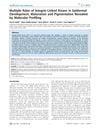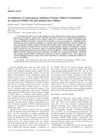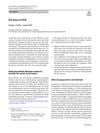Search
forLearn
4 / 4 resultslearn Low Level Laser Therapy
laser therapy for anti-inflammatory and likely insignificant hair regrowth effects
learn Osteopontin
signaling protein that, when suppressed, may grow hair by reducing inflammation and stem cell loss
learn Thymosin Beta 4
Research
5 / 1000+ results
research Multiple Roles of Integrin-Linked Kinase in Epidermal Development, Maturation, and Pigmentation Revealed by Molecular Profiling
ILK is essential for skin development, pigmentation, and healing.
research Par3–mInsc and Gαi3 Cooperate to Promote Oriented Epidermal Cell Divisions Through LGN
Par3–mInsc and Gαi3 work together to ensure proper cell division orientation in skin development.

research Arachidonate 12-Lipoxygenase Inhibitors Promote S100A3 Citrullination in Cultured SW480 Cells and Isolated Hair Follicles
Inhibiting ALOX12 can help hair cuticle maturation by increasing S100A3 citrullination.

research In Focus In HCB: The Role Of Cholesterol Transporter Proteins In The Human Hair Cycle, The Epithelial-To-Mesenchymal Transition And Primary Cilia In Urothelial Cancers, The Impact Of Ovarian Hormones And Choriogonadotropin On Endometrial Cell Polarity Before Implantation, And The Effects Of Epidermal Maturation And UV-Irradiation On The Protein rCLCA2 In Rodent Keratinocytes And Skin
The May issue discussed publishing agreements and four studies on cholesterol in hair, cancer cell changes, hormones in the uterus, and skin protein effects.
research The Mineralocorticoid Receptor Plays a Transient Role in Mouse Skin Development
The mineralocorticoid receptor temporarily affects mouse skin development, but the glucocorticoid receptor has a more lasting impact.
Community Join
5 / 81 results
community Minoxidil Response Bottlenecks: Why Sulfation and Transport Matter (And Where Tretinoin Fits In)
Minoxidil's effectiveness is limited by the need for sulfation and proper transport to hair follicles, with tretinoin potentially enhancing its effects by promoting enzyme activity and keratinocyte differentiation. Tretinoin may improve minoxidil's response by boosting the expression of necessary enzymes and transporters.

community If You Have DUPA, PLEASE READ THIS: Everyone Should Be Scalp Biopsied
Scalp biopsies are crucial for diagnosing hair loss conditions like Diffuse Unpatterned Alopecia (DUPA) and retrograde hair loss, as treatments like finasteride and dutasteride may not be effective if other conditions are present. Combining PPAR-GAMMA agonists with retinoids could improve treatments for conditions like Lichen Planopilaris.
community Comprehensive Microneedling Guide
Microneedling for hair restoration involves daily use of a 0.3 mm device and weekly use of a 0.5 mm device. Combining microneedling with Minoxidil can enhance hair growth.

community Compressed part of research of theory of androgenic/anabolitic balance. AGA h-responders analytic. Theory of physio-metabolitic method of anti AGA treatment
The treatment for androgenetic alopecia involves using finasteride and minoxidil with intense exercise and cold exposure to boost metabolism and reduce androgenic effects, potentially leading to hair regrowth. This approach may activate biological pathways for improved hair and overall health.
community Clearing the air on how non-surgical treatments really work
Treatments for hair loss, including finasteride, dutasteride, minoxidil, ketoconazole, microneedling, and low level laser light therapy, which aim to reduce DHT production, increase cell absorption and blood flow, and stimulate epidermal stem cells. It also stresses the importance of patience when using these treatments.